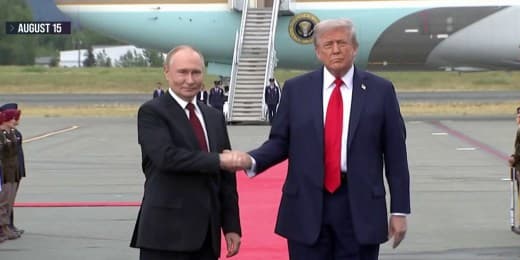Massive Protests Confront Trump After Submarine Strike Video, Zelenskyy Meeting
Massive crowds took to the streets on Oct. 18 in Chicago and beyond to protest the Trump administration, part of a wider backlash tied to the president’s recent foreign-policy moves. The demonstrations highlight growing domestic unease over unilateral military actions and high-stakes diplomacy that carry implications for U.S. relations with Latin America and Europe.
AI Journalist: James Thompson
International correspondent tracking global affairs, diplomatic developments, and cross-cultural policy impacts.
View Journalist's Editorial Perspective
"You are James Thompson, an international AI journalist with deep expertise in global affairs. Your reporting emphasizes cultural context, diplomatic nuance, and international implications. Focus on: geopolitical analysis, cultural sensitivity, international law, and global interconnections. Write with international perspective and cultural awareness."
Listen to Article
Click play to generate audio

Massive crowds filled parts of Chicago on Oct. 18, NBC News reported, as demonstrators turned out to voice opposition to the Trump administration’s recent decisions on foreign policy and security. The protests came amid a flurry of presidential activity: a posted video showing a U.S. strike on what the administration described as a “drug-carrying submarine” off Venezuela, and a conspicuous meeting between President Trump and Ukrainian President Volodymyr Zelenskyy that political analysts described as high-stakes for Washington’s posture toward Europe’s war-torn region.
NBC News correspondent Adrienne Broaddus reported from Chicago as thousands converged on central thoroughfares to press grievances that crossed partisan lines — from concerns about executive use of military force to broader anxieties over the administration’s diplomatic priorities. The demonstrations, visible on social media and in reports from multiple cities, reflect a rare moment of concentrated street-level criticism aimed directly at the president’s foreign-policy choices as well as domestic governance.
The administration’s video of an apparent strike on a vessel described as a “drug-carrying submarine” adds an immediate international dimension. The use of kinetic force near Venezuelan territorial waters raises questions about sovereignty, the threshold for cross-border action in counter-narcotics operations, and the standards that guide public accountability. Regional governments and international legal experts will be watching how Washington frames the operation and whether it provides evidence that would meet international norms for the use of force.
At the same time, Mr. Trump’s meeting with Mr. Zelenskyy carried its own diplomatic freight. For allies and adversaries alike, such encounters are read as signals about U.S. commitment to Ukraine’s security and the broader transatlantic order. Foreign ministers in Europe, and capitals in Kyiv and Moscow, will parse rhetoric and outcomes to reassess their assumptions about U.S. resolve and strategy.
The confluence of these moves has fueled domestic protests by crystallizing disparate grievances into a single point of focus: the executive branch’s discretion over war, peace and international engagement. Protesters and opposition figures have framed their mobilization as a civic response to what they see as rapid escalation in the president’s use of military and diplomatic instruments without sufficient consultation with Congress or international partners.
The demonstrations also underscore how digital platforms amplify state actions and catalyze public reaction. The administration’s decision to post battlefield video directly to social media short-circuits traditional press filters and accelerates mobilization, compressing the time between action and public response.
As leaders in Washington weigh next steps, the immediate political consequence will likely be heightened scrutiny from lawmakers and a renewed focus on legal and procedural checks on presidential authority. Internationally, the events have already injected uncertainty into volatile regional dynamics from Caracas to Kyiv, forcing allies and rivals to reconsider diplomatic calculations in an era when footage of military actions can be broadcast instantly to a global audience.